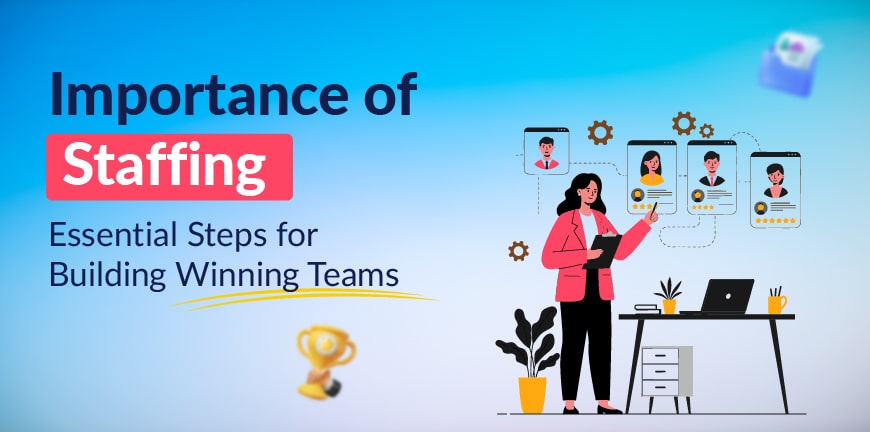
What is a Vendor Audit? Overview & Guide
04/07/2025
9 Types of Staffing Services Offered by Staffing Agencies: A Complete Guide
04/07/2025India is on a pathway to script its semiconductor success saga while the world watches. The Indian government launched the promising Production Linked Incentive (PLI) schemes, aiming to transform the country into a global centre for semiconductor and electronics production.
The framework is bold and self-reliant, and with the influx of investments, the industrial impetus is upbeat. However, there is an alarming piece of the puzzle missing, and that is skilled talent.
As the demand for semiconductor specialists in the country soars, the supply is short. If India does not amend the situation with robust recruitment strategies, then its chip dreams could short-circuit before charging up.
The PLI Scheme: Generating India’s Semiconductor Dreams
The₹76,000 crore ($10 billion) worth PLI scheme for semiconductors, launched under the India Semiconductor Mission (ISM), is crafted to attract investments in:
- Semiconductor fabrication (wafer fabs)
- Display manufacturing units
- Assembly, Testing, Marking, and Packaging (ATMP)
- Design and innovation
This initiative has drawn global enterprises like Micron Technology, Tata Electronics, Vedanta-Foxconn, and ISMC Analog, with plans for establishing manufacturing units in Gujarat, Tamil Nadu, and Assam.
Furthermore, the electronics PLI and IT hardware schemes are pushing the manufacturing of electronic parts, PCB manufacturing, and chip design by setting up a durable ecosystem.
1. Outcome
- Over ₹1.76 lakh crore in committed investments across sectors
- More than 12 lakh jobs, including ~91,600 jobs in the electronics section alone
- Planned regional allocation of manufacturing hubs
2. Looming Talent Scarcity
The roadmap is promising, with financial and policy incentives in place, but the issue lies with the severe dearth of human assets to power this growth.
Talent Gaps Identified
| Segment | Demand Surge | Skill Gap |
| Chip Design (VLSI, RTL, Analog) | High | ~100,000 engineers |
| Fabrication (Lithography, Process Engineering) | Very High | Severe dearth of cleanroom-trained specialists |
|
ATMP Operations |
Growing rapidly | Shortage of packaging experts |
| Semiconductor R&D | Critical for IP | Lower availability of PhDs, research scientists |
| Supply Chain & Equipment Maintenance | Essential | Lack of exposure to specialized tools and fabs |
Industry reports suggest that India requires 250,000 to 300,000 semiconductor professionals by 2027, a challenging target from the current talent base. Global competition further exacerbates the situation by vying for the same skill sets, with players like the USA, Taiwan, and South Korea intensively scaling their chip sectors.
Structural and Strategic Recruitment Impediments
1. Academia-Industry Disarray
Indian engineering colleges have many graduates passing out; however, there are only a handful prepared for job roles in the semiconductor sector. They don’t have exposure to:
- EDA tools and simulations
- Cleanroom protocols
- Firsthand chip design
- Standard equipment
2. Lack of Mid-Career Professionals
There is a shortage of professionals who have had 8 to 10 years of experience and expertise in the semiconductor domain. These individuals play a vital role in bringing together juniors and senior leadership, as they demonstrate a unique combination of technical talent and intellectual talent, including problem-solving abilities, years of hands-on experience, especially in the areas of fabrication and packaging. This adds momentum to the semiconductor value chain.
3. Industry Training Infrastructure Deficit
The training centres for semiconductor manufacturing require a specialized training setup equipped with high-standard prototyping labs, unique expensive environments, to develop a sophisticated semiconductor ecosystem. In India, there is a lack of such high-tech, elevated-grade semiconductor labs or R&D hubs. There is also a lack of experienced trainers and mentors available in the country.
Building the Talent Pipeline: The Initiatives
- The government has pioneered several initiatives to drive the semiconductor industry to be on par with global standards. Here are a few such mentions:
- Chips to Startup (C2S) Program: The module looks at training 85,000 engineers in design, verification, and system-level integration.
- AICTE Curriculum Revision: Introduction of new courses in VLSI, Embedded Systems, and Semiconductor Physics.
- National Apprenticeship Promotion Scheme (NAPS): Stipends and incentives provided for semiconductor-related apprenticeships.
- Centres of Excellence (CoEs): Units established across institutions like IITs, IIITs, and NITs for research in chip design and manufacturing.
Industry Partnerships
There is a surge of enterprises collaborating with colleges and institutions in India to develop curriculum, offer internships, and establish lab setups. Organizations like Tata Electronics, Micron have joined hands with institutions. Companies are also facilitating lateral recruitment on the job and building in-house academies to train freshers.
Initiatives by Recruitment Firms and Employers
Employers and recruitment companies need to revise their strategies to align with the government’s PLI-led semiconductor goal.
Industry-Centric Talent Acquisition
Recruiters must look for talent in talent banks related to backgrounds like electronics, physics, and instrumentation instead of focusing on just computer science. There is an abundance of engineers in Tier 2 and Tier 3 cities, who are underused, so recruiters need to tap these cities.
Upskilling and Reskilling Methods
A skilled talent pool is the need of the hour, with India treading towards becoming a global semiconductor centre. Conventional academic modules today cannot cater to the fast-changing and unique demands of the industry, especially in domains like chip design, VLSI, embedded systems, and cleanroom operations. This is where upskilling and re-skilling plans come in. These work through EdTechs, online learning platforms, and specialized sessions.
Internship-to-Employment Channels
The approach of integrating paid internships in semiconductor organizations during the final year of engineering courses is an effective way of bridging the industry and academic sector gap. These internships enable students to gain real-world perspectives, and for companies, it is advantageous for creating a pre-trained talent pipeline, diminishing hiring and training costs.
Relocating Talent and Mentorship
Indian semiconductor organizations must acquire Indian origin talent from abroad working in leading semiconductor hubs, as they possess expertise, leadership experience, and great knowledge about the industry. They can meet the urgent need of accelerating urgently needed to accelerate India’s capabilities. Active recruitment of varied professionals into domestic semiconductor job positions and initiating mentorship programs enabling them to guide local teams is an impactful approach.
Summary Table: Key Data Points
| Sector/Area | PLI Outlay (INR Crore) | Investment Attracted | Direct Jobs Created/Expected | Key Trends/Notes |
| Semiconductors | 76,000 | >1.26 lakh crore | 8,500 (direct, high-tech) | 25,000 direct, 60,000 indirect |
| Electronics
Components |
22,919 | 59,350 | 91,600 (over 6 years) | Covers PCBs, capacitors, etc. |
| Electronics
Manufacturing |
N/A (part of PLI) | N/A | 1.28 lakh | Large exports |
| Automobiles/AutoComp | 2,818.85 (2025-26) | N/A | N/A | Major allocation increase |
| Textiles | 1,148 (2025-26) | N/A | N/A | Significant |
Talent-Driven Approach to Succeed
The visionary semiconductor sector goals backed by the PLI schemes are brave and formidable. But the truth remains clear: there is a need for skilled manpower, no matter the volumes of money invested, or the number of high-tech labs built. Progress is only possible if the most powerful element of the industry fuels it.
The value chain of the semiconductor industry is not just complicated but is one of the most talent-craving ecosystems in the world. Every phase of its processes requires and demands a relentless pursuit of precision, years of niche training, and cutting-edge solutions. With Infrastructure laying the groundwork for its core elements, it is the skilled professionals, like engineers, scientists, and technicians, who create a robust pathway. PLI ignites a spark, but talent keeps the engine running.




